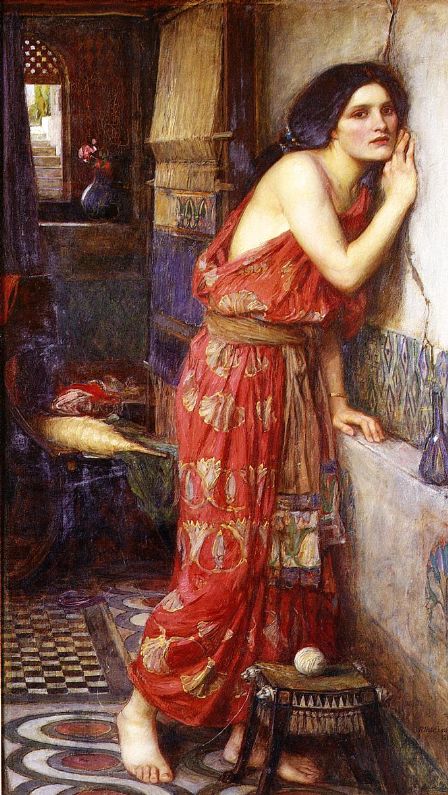The tale of Thisbe comes from book four of Ovid’s Metamorphoses. In ancient Babylon, the families of Pyramus and Thisbe live in separate houses that share a roof. Over time, the two youths fall in love but are forbidden by their parents to see each other. Undaunted, the lovers use a crack in the wall to communicate.
Eventually, they plan to meet at a mulberry bush outside the city to elope. Thisbe arrives before Pyramus and while she waits, she is frightened by a lioness whose jaws drip with blood from a recent kill. Thisbe escapes to safety and in her haste, she drops her veil. The lioness picks up the veil, staining it with the blood on her jaws. When Pyramus arrives and sees the bloody veil, he mistakenly assumes that Thisbe has been killed. In his grief, he falls upon his sword. Thisbe returns to find her love dying and kills herself with the same sword. They die together under the mulberry tree, their spilled blood turning the white berries red.
Shakespeare reworked Pyramus and Thisbe into the tragedy of Romeo and Juliet, but he also used it in comedic form in A Midsummer Night’s Dream. His different approaches to Ovid’s story in both plays demonstrates that there is always more than one way to interpret a work. While it is an obvious tragedy in Romeo and Juliet, it is a farce in Midsummer. The slain lovers are presented as a somewhat silly play-within-a-play in Act 5, the setting of which is a wedding celebration. Pyramus and Thisbe is an odd choice to celebrate nuptials, perhaps Shakespeare is using it as a veiled message to overbearing parents since Theseus, the father in Midsummer, has expressed displeasure in his own daughter’s choice of groom.
The play-within-a-play may not be the only reference to Pyramus and Thisbe in A Midsummer Night’s Dream. The very framework of the plot has similarities. Like Pyramus and Thisbe, the group of lovers meet outside the city and the many errors that threaten to keep them apart are echoes of the original tale, presented in a lighthearted romantic comedy (complete with mischievous fairies). In both Midsummer and Romeo and Juliet, we see issues of parental control, clandestine meetings, all consuming passion and twists of fate. Whether comedy or tragedy, I think the important lesson for us to learn can be summed up by Lysander’s line to Hermia in A Midsummer Night’s Dream, “The course of true love never did run smooth.”


I love your blog – it is so informative and always beautiful. You brighten my life with your pieces on art. Do you know who the model is?